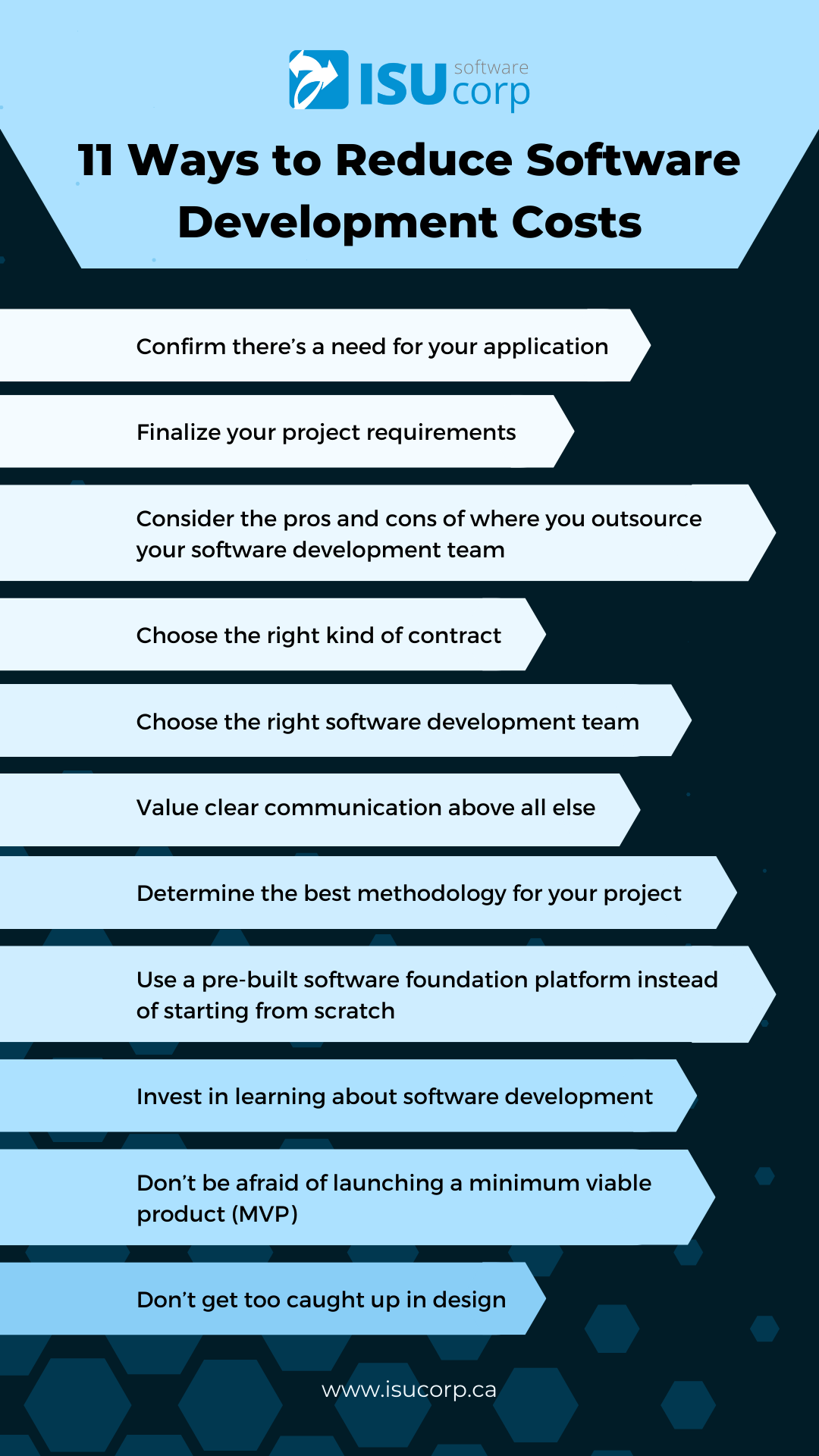The world has come a long way since the days of complete manual labour. It was costly, boring, and often times dangerous work. Fast forward to today– the technological advancements we see are beyond what a lot of people expected to see in their lifetimes. Not only is it an advantage to automate processes; these days, it’s a necessity to keep up with competitors.
So, to help businesses considering automation, we put together a list of the top 11 benefits of process automation for business in 2023.
What is process automation?
As the name suggests, process automation is the use of technology to automate repetitive, manual, and rule-based tasks that are performed by humans. By implementing process automation, you can streamline your workflows, reduce errors, save time and money, and improve customer satisfaction.
In this blog, we will explore some of the advantages of process automation for your business, and how you can get started with it.
Reduce Operational Costs:
One of the main sources of operational costs for businesses is labor. Manual work requires human resources that are often expensive, scarce, and prone to errors. Process automation can eliminate manual work by using software robots or bots to perform tasks that are repetitive, rule-based, and predictable, such as data entry, invoice processing, email handling, etc. By automating these tasks, businesses can reduce labor costs, improve accuracy, and free up their employees for more value-added work.
Another source of operational costs for businesses is waste and rework. Waste and rework occur when processes are inefficient, inconsistent, or error-prone. Process automation can minimize waste and rework by streamlining and standardizing the workflows, ensuring quality and compliance, and reducing errors and deviations. By automating these processes, businesses can save time and money, optimize resource utilization, and enhance customer satisfaction.
A third source of operational costs for businesses is scalability and flexibility. Scalability and flexibility refer to the ability of businesses to adapt to changing market conditions, customer demands, and business opportunities. Process automation can increase scalability and flexibility by enabling businesses to handle more volume and complexity without compromising on quality or efficiency. By automating these processes, businesses can lower operational risks, increase operational agility, and gain a competitive edge.
2. Speed Up Task Execution:
Software robots or bots can perform tasks that are faster, more accurate, and more reliable than humans, such as data extraction, validation, calculation, etc. By automating these tasks, businesses can reduce the duration of their processes, increase their throughput, and meet their deadlines.
Automation is also a gift when it comes to resource utilization. This refers to the extent to which the available resources, such as human capital, equipment, materials, etc., are used efficiently and effectively within a process. Process automation can optimize resource utilization by using software applications to monitor and control the allocation and consumption of resources, such as workload balancing, inventory management, energy saving, etc. There are lots of opportunities to improve the waste that’s associated with an inefficient or unmonitored resource use. With that in mind, remember that it’s always best to talk to experts when starting an automation solution project.
3. Reduce Human Mistakes
One of the main drawbacks of manual work is that it is prone to human errors. Human errors are mistakes or deviations that occur due to human factors, such as fatigue, distraction, stress, or lack of knowledge. Human errors can have negative consequences for businesses, such as customer dissatisfaction, regulatory fines, reputational damage, or loss of revenue. Process automation can minimize human errors by following a standard operating procedure (SOP) that defines the steps and rules for performing a task or activity within a process. By following an SOP, process automation can ensure that the task is performed correctly and consistently, without any variation or deviation.
A drawback of manual work to consider is that it can compromise accuracy. Accuracy is important for businesses, as it affects the quality and reliability of their products and services. Process automation can improve accuracy by eliminating the chances of mistakes that can occur due to human factors, such as typos, miscalculations, misinterpretations, or omissions. By eliminating these mistakes, process automation can ensure that the output or outcome is accurate and valid.
4. Improve Customer Satisfaction
Delivering faster services leads to a higher chance of customer satisfaction, especially when it’s still paired with high quality results. Customers expect quick and efficient service from businesses, especially in the digital age. By automating processes, businesses can reduce the time spent on manual tasks and focus on more value-added activities. For example, a bank can use process automation to verify customer identity, check credit history, and approve loans in minutes instead of days. This can increase customer loyalty and retention, as well as attract new customers who value speed and convenience.
Customers want reliable and error-free service from businesses, especially when it involves sensitive or complex information. By automating processes, businesses can reduce the risk of human errors and inconsistencies that can lead to customer dissatisfaction and complaints. For example, an insurance company can use process automation to calculate premiums, process claims, and detect fraud with greater accuracy and consistency. This can enhance customer trust and confidence, as well as reduce operational costs and risks.
5. Scale Faster
Let’s talk more about business growth. Businesses often face challenges in meeting the growing demand of their customers, especially in competitive and dynamic markets where sudden fluctuations can make the volume of work too much to handle. By automating processes, businesses can increase their capacity and throughput, while reducing the need for additional resources and overheads. For example, an e-commerce company can use process automation to manage inventory, orders, payments, and deliveries with minimal human involvement. This can enable the company to serve more customers, expand its market reach, and increase its revenue.
Another way that process automation can scale the business is by enabling it to handle more complexity. Businesses often deal with complex and diverse processes that involve multiple systems, data sources, rules, and exceptions. By automating processes, businesses can simplify and standardize their workflows, while ensuring compliance and quality. For example, a healthcare provider can use process automation to integrate patient records, medical histories, prescriptions, and insurance claims with various platforms and regulations. This can enable the provider to offer more personalized and effective care, improve patient outcomes, and reduce errors and risks. Looking to implement an automation solution? We’ve got you covered– book a discovery call to learn more about what we can do for your organization.
6. Improve Content Marketing
Businesses can looking forward to improving their content marketing strategy by automating the distribution of content. Content distribution is a strategic and tactical process that involves reaching and engaging the target audience through various channels and platforms. By automating this process, content marketers can optimize their reach, frequency, and timing, while reducing the manual effort and cost. For example, a content marketer can use process automation to schedule and publish content on social media, email, web, and mobile platforms based on predefined criteria, such as audience preferences, behavior, and feedback. This can enable the content marketer to deliver the right content to the right audience at the right time, while increasing traffic and conversions.
It’s also a benefit to automate the analysis of content. Content analysis is a data-driven and analytical process that involves measuring and evaluating the performance and impact of content across multiple channels and platforms. By automating this process, content marketers can gain valuable insights, such as content effectiveness, audience engagement, sentiment, and conversion rates. For example, a content marketer can use process automation to collect and visualize data from various sources, such as web analytics, social media analytics, email analytics, and customer feedback. This can enable the content marketer to monitor and improve their content strategy, while demonstrating their return on investment.
7. Improve Employee Morale
No one enjoys the soul-crushing reality of doing the same, insignificant-feeling things day in and day out. While it may be a vital part of the process, employees often have trouble staying motivated if their role is reduced to tasks that could be done by a machine. One way that process automation can increase employee morale is by freeing them from these mundane and repetitive tasks. Employees often feel bored, frustrated, and demotivated when they have to perform the same tasks over and over again, such as data entry, invoicing, or reporting. By automating these tasks, employees can save time and energy, while reducing the risk of errors and stress. For example, an accounting firm can use process automation to generate and send invoices to clients automatically, instead of manually creating and emailing them. This can free up the employees' time and allow them to focus on more challenging and rewarding tasks, such as financial analysis, consulting, or auditing. Read more about why finance firms use system automation.
Another way that process automation can increase employee morale is by allowing them to focus on more creative and strategic work that adds value to the business. Employees often feel more engaged, satisfied, and fulfilled when they can use their skills, talents, and passions to contribute to the business goals and vision. By automating the routine and low-value tasks, employees can devote more time and attention to the high-value and high-impact tasks, such as innovation, problem-solving, or decision-making. For example, a marketing agency can use process automation to create and distribute content across multiple channels and platforms, instead of manually writing, editing, and posting them. This can enable the employees to focus on more creative and strategic work, such as designing campaigns, conducting research, or generating insights.
8. Track Performance, Accountability, and Data
Performance tracking is the measurement and evaluation of the speed, accuracy, quality, and efficiency of the automated processes. By tracking these metrics, businesses can assess how well the automated processes are meeting their objectives and expectations, as well as identify any issues or bottlenecks that need to be resolved. For example, a manufacturing company can use process automation to track the production rate, defect rate, and downtime of its automated machines, and compare them with the set standards and goals. This can enable the company to monitor and improve its operational performance, as well as ensure compliance and quality.
Effectiveness monitoring is the analysis and interpretation of the outcomes, results, and impacts of the automated processes. By monitoring these indicators, businesses can determine how much value and benefit the automated processes are adding to the business, as well as gather feedback and suggestions for improvement. For example, a customer service company can use process automation to monitor the customer satisfaction, retention, and loyalty rates of its automated chatbots, and collect customer feedback and ratings. This can enable the company to evaluate and enhance its customer service quality, as well as increase customer engagement and trust.
This is an excellent way to measure the success of your new automations, and to identify what needs to be improved. This kind of monitoring is crucial for any businesses using automation for the first time. The best solution is one that can continue to grow and improve as the company does. Learn more about how you can use this in your business here.
9. Reduce Workload Stress
A positive side effect of automating processes is reducing work-related stress by simplifying and streamlining the workflows.
What are workflows?
Workflows are the sequences of steps and actions that are required to complete a specific task or process. By automating these workflows, businesses can eliminate unnecessary and redundant steps, as well as standardize and optimize the best practices.
For example, a human resources department can use process automation to simplify the hiring process, such as screening resumes, scheduling interviews, sending offer letters, and onboarding new hires. This can reduce the complexity and ambiguity of the workflows, as well as improve the consistency and quality of the outcomes.
Process automation can also reduce work-related stress by reducing the workload itself. Like we’ve said before, automating the low-value and high-volume tasks free up employee time and resources, as well as reduce the pressure and expectations. For example, a sales team can use process automation to reduce their workload, such as generating leads, sending follow-ups, updating CRM, and creating reports. This can enable the employees to focus on more strategic and meaningful tasks, such as building relationships, closing deals, and providing solutions.
Having fulfilling work and a healthy work-life balance contributes to the overall mental health of your team. With burn out and high turn over rates, business perform better when employees are taken care of. It’s also easier to hire new employees if your company has a reputation of caring for its teams.
10. Enhance Productivity
One way that process automation can improve productivity is by enabling the business to achieve more results with fewer efforts. Effort is the amount and intensity of work that is required to complete a specific task or process. By automating these tasks or processes, businesses can reduce the human involvement and intervention, as well as increase the speed, accuracy, and quality of the execution. For example, a restaurant can use process automation to automate the ordering, cooking, and delivery of food, instead of relying on human servers, chefs, and drivers. This can enable the restaurant to serve more customers, reduce errors and waste, and improve customer satisfaction.
Another way that process automation can improve productivity is by increasing the output and revenue. Output is the amount and value of goods or services that are produced by a business. Revenue is the amount of money that a business earns from selling its goods or services. By automating the tasks or processes that are involved in producing and selling goods or services, businesses can increase their capacity and efficiency, as well as reduce their costs and risks. For example, a software company can use process automation to automate the development, testing, and deployment of software, instead of relying on human programmers, testers, and engineers. This can enable the company to create more software products, reduce bugs and defects, and improve customer loyalty.
11. Get Ahead of Competition
One way that process automation can provide a competitive advantage is by enabling the business to offer better products and services than its competitors. Products and services are the goods or solutions that a business provides to its customers to satisfy their needs and wants. By automating the tasks or processes that are involved in creating and delivering products and services, businesses can improve their quality, reliability, and differentiation, as well as reduce their costs and risks. For example, a car manufacturer can use process automation to automate the design, production, and maintenance of cars, instead of relying on human designers, workers, and mechanics. This can enable the manufacturer to offer more innovative, efficient, and safe cars than its competitors, as well as lower its prices and increase its profits.
Another way that process automation can provide a competitive advantage is by gaining insights into its customers' behavior and preferences. Customers' behavior and preferences are the actions and choices that customers make when they interact with a business or its products or services. By automating the tasks or processes that are involved in collecting and analyzing customer data, businesses can understand their customers better, as well as anticipate their needs and wants. For example, a online retailer can use process automation to automate the tracking, segmentation, and personalization of customer data, instead of relying on human analysts, marketers, and salespeople. This can enable the retailer to offer more relevant, customized, and engaging products or services to its customers, as well as increase their loyalty and retention.
The Takeaway
Process automation is a powerful and transformative technology that can help businesses improve their performance, productivity, and profitability. By automating repetitive and rule-based tasks, businesses can save time and resources, reduce errors and risks, enhance customer satisfaction and loyalty, and gain a competitive edge in the market. However, process automation is not a one-size-fits-all solution that can be applied to any business or industry. Businesses need to carefully assess their needs, goals, and capabilities, as well as the costs and benefits of automation, before implementing it.
Businesses need to consider the human and ethical aspects of automation, such as the impact on employees, customers, and society. Process automation is not a replacement for human creativity, intelligence, and judgment, but a tool that can augment and complement them. Therefore, businesses need to balance the use of automation with the development of human skills and values, as well as foster a culture of collaboration and innovation. By doing so, businesses can leverage the full potential of process automation and achieve sustainable and long-term success.
If you need any help or guidance with process automation, feel free to contact us. We are a team of experts who can help you design and implement the best automation solution for your business.
—
ISU Corp is an award-winning software development company, with over 17 years of experience in multiple industries, providing cost-effective custom software development, technology management, and IT outsourcing.
Our unique owners’ mindset reduces development costs and fast-tracks timelines. We help craft the specifications of your project based on your company's needs, to produce the best ROI. Find out why startups, all the way to Fortune 500 companies like General Electric, Heinz, and many others have trusted us with their projects. Contact us here.





















